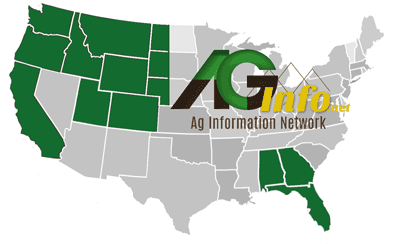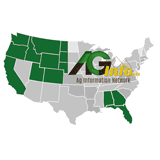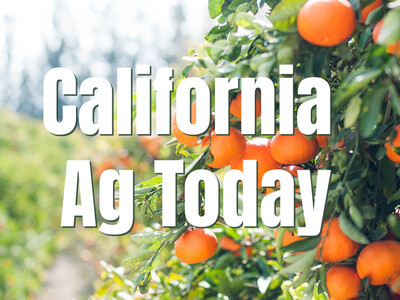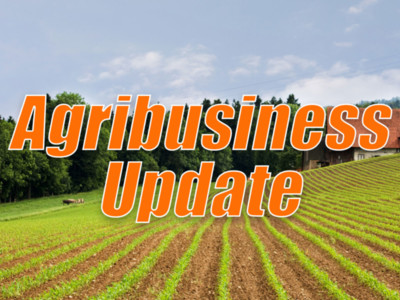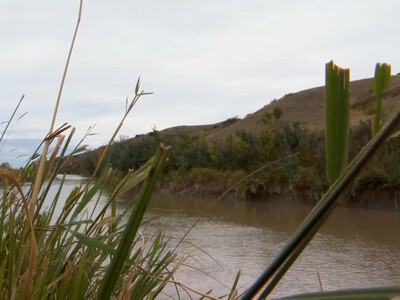Tough times for farmers
Idaho and U.S. farmers are currently facing tough financial challenges and many are struggling to stay in business.Farm input costs are hovering at record levels, while the prices that farmers receive for many of their crops continue to decline, in some cases dramatically.
As an example, the average price that Idaho farmers received for 100 pounds of fresh Russet table potatoes in 2024 was $6.54, according to North American Potato Market News. So far this year, that average price is $4.40.
The NAPM Grower Return Index shows that Idaho farmers this year are receiving an average of $1.97 for each 100 pounds of potatoes they produce, after transportation and other expenses are factored in. That’s compared to $7.19 in 2024.
To further put the situation in perspective, the break-even point for Idaho potato farmers right now is about $9 per 100 pounds of potatoes they produce, said NAPM owner Ben Eborn.
This means farmers are on average receiving way less for their potatoes than what it costs to grow them.
“When your break-even cost on potatoes is $10 per hundred pounds and they’re offering you $2, it’s pretty tough,” said southeast Idaho potato grower Ray Searle.
As further example of how much farm-level crop prices have declined recently, total farm-gate revenue for hay in Idaho declined 38 percent in 2024 compared with 2023, according to the U.S. Department of Agriculture. Farm-gate revenue is what the farmer receives for their commodity.
Revenue from hops in Idaho dropped 24 percent during that same period, barley revenue was down 18 percent, potato revenue declined 7 percent, and revenue from wheat fell 2 percent.
“Your costs right now are so much more than what you’re getting for your crop,” Searle said. “It’s everything. All commodity prices –potatoes, corn, hay, sugar beets, grain – are in the toilet right now.”
Total net farm income in Idaho in 2024 was down 13 percent from 2023 and 30 percent lower compared with 2022, according to USDA.
It’s at least as difficult this year for agricultural producers, said Teton farmer Dwight Little.
“On the crop side, it’s pretty tough right now,” he said. “Everything is in the tank right now, except cattle and calves. Thank goodness we have some cows. They really help.”
“Expenses have gone up 30 percent or more over the last three or four years while farm commodity prices are the same or worse,” said New Plymouth farmer Galen Lee. “Input costs have gone up, but we’re not selling our commodities for any more.”
While USDA forecasts total U.S. revenue from the livestock sector will be up this year, it’s the opposite for the crop sector.
According to USDA data released Sept. 3, the total value of crop production in Idaho was $4.8 billion in 2024, down 12 percent from 2023.
Rupert farmer Mike Wilkins said 2025 is no better on the crop side. Farm input costs are holding at or near record levels, while the price that farmers are receiving for their commodity continues to decline, he said.
“The input prices this year are atrocious,” Wilkins said. “It’s going to be a tough year. We’ll hold it together, but it’s a tough son of a gun out there.”
The USDA data shows intermediate farm production expenses in Idaho totaled $7.2 billion in 2024, up 6 percent from 2023. Intermediate farm expenses include things like feed and seed purchases, fertilizers, pesticides, fuel, electricity, marketing, storage and transportation.
“Everything costs more for the farmer and it’s just awful.,” said Bear Lake rancher and farmer Jim Parker. “It’s just bad all around.”
When total farm production expenses are added up, total net farm income for Idaho’s 22,000-plus farmers and ranchers in 2024 came in at $2.6 billion, down 13 percent from 2023 and down 30 percent compared with 2022.
Net farm income is what’s left over after total expenses are deducted from total income. Think of it as the farmer’s paycheck and it’s down 30 percent over the past two years.
The USDA’s Sept. 3 report included the first state-level estimates of farm income for 2024. The total farm production costs and revenue projections for 2025 will be released late next summer.
The USDA data show that total farm and ranch production expenses in Idaho continue to rise in most categories. For example, total expenses for livestock and poultry purchases hit $1 billion in 2024, up from $808 million in 2023. Seed purchases totaled $420 million, up from $361 million.
Total statewide expenses for pesticide purchases hit $379 million in 2024, up from $332 million in 2023, total fertilizer costs hit $750 million, up from $609 million, and expenses for machine hire and custom work totaled $167 million, up from $112 million.
Total Idaho irrigation expenses in 2024 hit $106 million, up from $84 million in 2023.
Some expenses did decrease.
For example, total feed purchases in Idaho dropped from $2.4 billion in 2023 to $2.2 billion in 2024, total fuel and oil costs decreased from $378 million to $365 million, and marketing, storage and transportation costs dropped from $220 million to $208 million.
But when everything was tallied up – total farm and ranch production income minus expenses – the data shows that the average paycheck for Idaho’s farms and ranches decreased substantially in 2024 compared with 2023 and was down by almost a third from 2022.
According to farmers, the financial situation in farm country won’t be any better in 2025. Idaho experienced good growing conditions this year, they said, and crop yields were generally good and in some cases very good.
But farm-level commodity prices are so low, they won’t make up for the good growing year, said Oakley potato farmer Randy Hardy.
“They’re about down to where they can’t get any lower,” he said.
“We have good yields, but it’s a challenge with low prices,” said Ririe farmer Clark Hamilton. “We have to tighten our belts and get through this tough time.”
